- Places
- Plans
- Itineraries
- Experiences
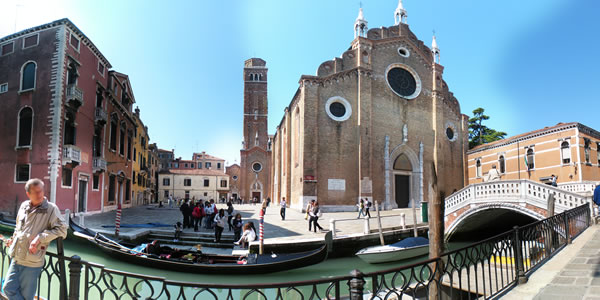
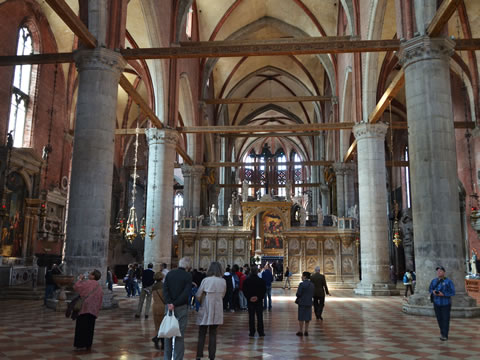
That's because it was built by the frari (Venetian dialect for frati, or "brothers") of the Franciscan order.
Done in the 13th/14th–century Gothic style (and rebuilt in the middle 1400s), the interior of the church is plain and cavernous (90m long!) in the style typical of the simple Franciscans.
The carved marble rood screen in the center of the church and the 124 elaborate wooden stalls of the Monk's Choir beyond both date to late 15th century.
I Frari does manage, despite its spareness, to house several artistic masterpieces.
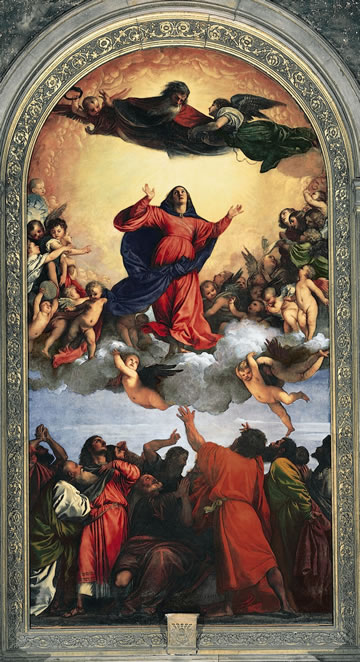
The most striking of the two is the Assumption of the Virgin, over the main altar, glowing with gold and painted in 1518.
In his Madonna di Ca' Pesaro (1519/26), on the left aisle, Titian broke with tradition (and presaged the baroque style) by not planting the Virgin Mary and baby Jesus in the center of the painting surrounded by others, but rather placing them among the swirl of all the figures, allowing for a more dynamic composition.
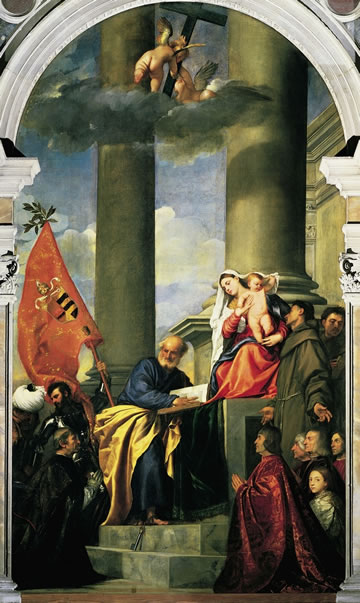
Titian painted this work for the Pesaro family, long one of the richest in Venice (as a visit to their family palace, Ca' Pesaro, will prove).
This painting was commissioned by Jacopo Pesaro, Bishop of Paphos and commander of the Vatican fleet under Pope Alexander VI. (One assumes he is the man in the red robe kneeling before the gaggle of Pesaro family members in the bottom right corner—casting patrons as bystanders to holy events like this was a classic Renaissance fashion of simultaneously emphasizing their piousness while also showing off who paid for the painting.)
However, it was a later scion of the family, Giovanni Pesaro, who would eventually become doge (albeit breifly: September 1658–March 1659), and his ornate tomb now decorates the third bay on the left aisle of the church.
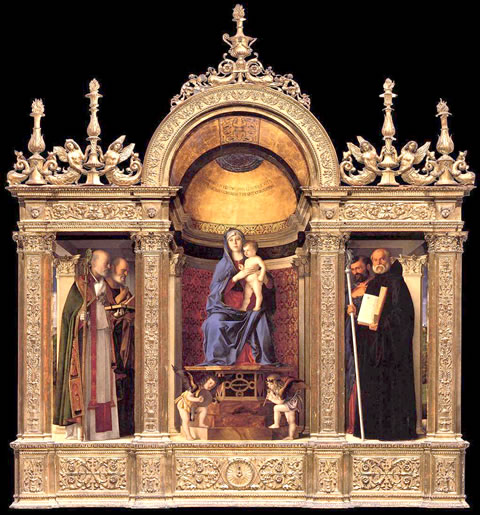
There are also several nice works by the Vivarini clan, and the only sculpture by Donatello in Venice: A very human-looking painted wood St. John the Baptist in the chapel just to the right of the main altar.
The grandiose tombs of two famous Venetians are also here.
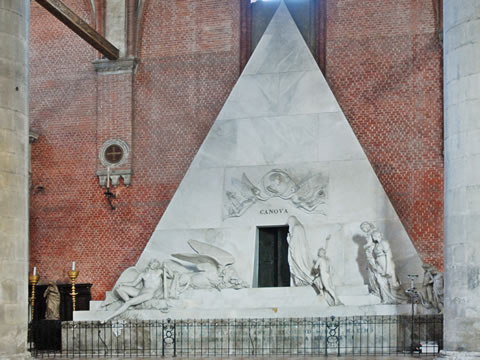
However, the great painter's memorial—also designed by Canova's pupils—ended up instead as a classical-style archway topped by the winged lion of St. Mark.
Santa Maria Gloriosa dei Frari ★
Campo dei Frari 3072, San Polo.
Vaporetto: San Tomà (walk straight ahead on Calle del Traghetto, then turn right and left across Campo San Tomà; walk as straight ahead as you can, on Ramo Mandoler, then Calle Larga Prima, and turn right when you reach beginning of Salizada San Rocco).
tel. +39-041-275-0462
www.chorusvenezia.org
Open Mon-Sat 9am–6pm, Sun 1–6pm
Adm
Frari tours
• Venice Rialto Market, San Polo and Frari Church Walking Tour
• Context: Power and Glory in Renaissance Art: Titian, Tintoretto, and Veronese
• San Polo Walking Tour - Merchants, Courtesans and Painters
• Hidden Venice Half-Day Walking Tour
• One-Day Venice: An Introduction to the City
• Context: Ecology of Venice
• Context: Daily Life in Venice for Families
In the summer high season, volunteers sometimes offer free tours in English; check ahead of time
Planning your day:Visiting the church only takes about 20 minutes, but it makes for a cool and relaxing respite from the jostle and crowds of Venetian alleys and famous sights, so you might want to just sit and relax on a pew. Venice itineraries
Go ahead and buy the €10 Chorus Pass rather than pay the separate, €3 admission (visit just three more churches—of the 16 covered—and it'll pay for itself).
Sights nearby
★★★ Scuola Grande di San Rocco (museum)
Where to eat nearby
Pizzeria Da Sandro [meal]
★ Pizzeria Ae Oche [light meal]
★★ Cantina Do Spade [light meal/snack]
Hotels nearby
Hotel Tivoli
Hotel Locanda Matir
Hotel Locanda Gaffaro
RR Pensione Guerrato
RR Hotel Antica Locanda Sturion
RR Hotel San Cassiano Ca' Favretto
Share this page
Search ReidsItaly.com